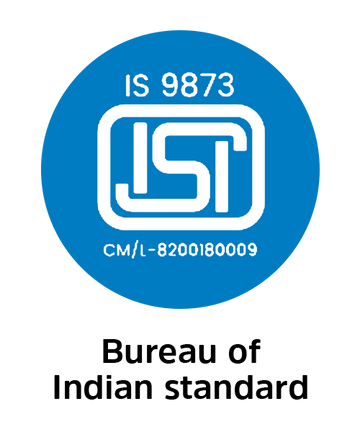Ever notice how your brain just refuses to slow down? You sit to focus, but your thoughts keep jumping — from that unfinished task to a random worry you didn’t even know you had. That’s not just you. It’s modern life catching up with your mind.
Across the world, stress and ADHD are becoming everyday struggles. The World Health Organization says nearly a billion people now live with a mental health condition. And ADHD? It affects millions of kids and adults trying to stay organized in a world built on distractions.
Here’s what’s changing: people are realizing you don’t always need pills to take control. You can manage stress and ADHD without medicine by training your mind — just like you’d train your body. Breathing routines, mindfulness, even small habits or simple tools can help.
That’s why brands like Girgit Toys are rethinking focus with RotoBee, one of the top fidget toys made to calm, center, and refocus your mind naturally.
This guide reveals how to calm your mind, strengthen focus, and achieve better mental wellbeing—without depending on medication.
Understanding ADHD and Stress: The Connection
Let’s be real — ADHD and stress often walk hand in hand. One feeds the other, and before you know it, you’re stuck in a loop you didn’t sign up for.
ADHD isn’t just about getting distracted or being forgetful. It’s a condition that changes how your brain handles focus, emotions, and motivation. Some days, everything clicks. Other days, your thoughts jump like tabs on a browser that won’t stop opening.
Now bring stress into that picture. Stress tightens your chest, fogs your memory, and drains your energy. When that happens, even simple tasks start to feel impossible. For someone already dealing with ADHD symptoms, stress doesn’t just make things worse — it magnifies them.
Researchers have found that adults with ADHD are far more likely to experience chronic stress and anxiety than those without it. The two conditions fuel each other, and medication alone doesn’t always fix that.
This is where natural stress management strategies come in — breathing routines, structure, behavioral treatment for ADHD, mindfulness, and tools that help you stay grounded. Once you learn how stress affects your focus, you can start changing your response instead of fighting the feeling.
Why Managing Stress and ADHD Without Medicine Works
Here’s the truth — your brain isn’t broken. It’s just tired of fighting itself.
Most people with ADHD or constant stress don’t need another prescription; they need a reset. A chance to slow down and listen to what their mind is trying to say.
Medication can help, sure. But it doesn’t always teach you how to cope. The moment the pill wears off, you’re back in the same storm. That’s why more people are learning to manage stress and ADHD without medicine. Not because they’re against treatment — but because they want control that lasts.
When you shift focus to natural methods, the change starts quietly. A short walk clears your head. Breathing slows your heart rate. Small stress relief exercises help your body release tension before it piles up. Over time, those tiny habits build mental strength.
Science backs it too. Harvard Health notes that regular movement can drop stress hormones like cortisol by almost 30%. Less cortisol means fewer meltdowns, better sleep, and a mind that doesn’t feel like it’s constantly sprinting.
People with ADHD symptoms also respond well to behavioral treatments — learning structure, breaking big goals into small tasks, using focus anchors when the mind drifts. That’s where sensory tools like RotoBee from Girgit Toys come in. It’s a simple fidget toy, but it gives your hands something to do while your mind resets. That physical movement creates calm. It’s not magic, it’s how the brain works — motion helps focus.
Managing stress naturally isn’t about perfection. It’s about noticing when your body starts tightening up and having the tools to ease it. Breathing. Moving. Fidgeting. Resting. Little things that add up to a calmer, steadier version of you.
Top Stress Management Strategies That Actually Work

Everybody tells you to “just relax.” Easy to say when your head isn’t buzzing and your to-do list doesn’t look like a phone book. Managing stress isn’t about pretending to be calm; it’s about finding simple habits that keep your brain from running off the rails.
-
Move first
If you sit in one spot too long, the tension builds. Get up, stretch, walk around the block, do a few push-ups—whatever shakes the energy loose. Movement lowers cortisol, the stress chemical, and clears the fog. Twenty minutes of light exercise can already help your body settle. -
Breathe with intent
Slow breathing is the body’s built-in reset button. Four seconds in, hold for two, six seconds out. Do that for a minute. Your pulse slows, thoughts stop bouncing around, and the noise softens. -
Write it out
When thoughts start piling up, grab a notebook. Jot everything down—tasks, worries, random ideas. Getting it out of your head gives your mind a break and creates a bit of peace. -
Keep your hands busy
A calm mind sometimes starts with restless hands. Tools like RotoBee from Girgit Toys give that energy somewhere to go. The small, repetitive motion grounds you and helps you focus. It’s simple, but for people dealing with ADHD or constant stress, it works. -
Guard your quiet time
Ten minutes without screens or chatter can feel like a full reset. Sit by a window, breathe, stare at nothing. That small pocket of silence is where mental fitness starts to grow. -
Sleep like it matters
You can’t talk about reducing stress without talking about rest. Poor sleep makes ADHD symptoms louder and stress harder to manage. Good rest is your cheapest therapy.
None of these are fancy hacks. They’re small, real actions you can repeat tomorrow and the day after. That’s how stress management actually works—tiny, steady moves that build a calmer, stronger mind.
Behavioral Treatment for ADHD – Beyond Pills
Medication can help, but it doesn’t teach you how to live with your brain. That’s what behavioral treatment for ADHD is really about—learning habits that fit how your mind actually works instead of trying to force it into a box.
People with ADHD already know the pattern: you start strong, lose focus halfway through, then stress hits. The frustration feeds the distraction. Behavioral therapy breaks that loop by focusing on daily behavior, not quick fixes.
Structure helps
Small routines—same wake-up time, short to-do lists, clear breaks—create rhythm. The point isn’t perfection; it’s predictability. Your brain calms down when it knows what’s next.
Rewards matter
Dopamine is the ADHD engine. Celebrate progress, even small wins. It trains your brain to link effort with satisfaction.
Mindfulness is therapy, not a trend
A study showed that mindfulness programs cut impulsive reactions in adults with ADHD by nearly 30 percent. Slowing down awareness helps you catch yourself before distraction snowballs.
And here’s something many people overlook—stress therapy and ADHD treatment often overlap. The same breathing and grounding techniques that lower stress also sharpen focus. That’s why tools like RotoBee fit naturally into this kind of therapy. The motion keeps your hands moving, gives restless energy a place to land, and quietly trains your attention span.
You can’t erase ADHD, but you can manage it. Combine structure, movement, and mindfulness, and the noise turns down. No side effects, no dependence—just slow, steady control over your own focus.
Meet RotoBee – A Natural Solution to Manage Stress and ADHD

I’ll be honest — when you’re trying to calm your brain, the last thing you want is another lecture about breathing or balance. You already know what to do. The problem is, your body won’t sit still long enough to listen.
That’s where RotoBee helps.
It’s not a miracle gadget or another trendy toy. It’s a small, simple fidget tool made by Girgit Toys, built for people who think faster than they can focus. It fits in your palm, spins smooth, and gives that restless energy somewhere to go.
If you live with ADHD or deal with constant tension, you’ve probably tried all the usual stuff — therapy, routines, maybe even medication. They help, but they don’t always stick. Tools like RotoBee make the process easier. It’s part of what therapists call behavioral treatment for ADHD, using physical feedback to guide attention.
When your hands move, your thoughts slow down. It’s basic neuroscience. That’s why teachers give stress balls to kids who can’t focus, or why adults tap pens in meetings. It’s self-regulation in disguise. Stress relief exercises and sensory tools trigger that same calm.
One study observed that children with ADHD who used tactile fidgets showed up to 45–55% more focused behavior during classroom activities. The same logic applies to adults — channeling restlessness through motion improves concentration and reduces tension.
Using RotoBee isn’t about “fixing” yourself. It’s about finding rhythm. Spin it while reading, while thinking, during a break — it reminds your mind to slow down without you even trying. Pair that with mindful living and simple relaxation techniques — breathing, stretching, short walks — and you build the foundation of real mental wellness.
It’s small, pocket-sized, and honest. No screens, no apps, no noise. Just you, your thoughts, and a tool that quietly brings you back to balance. That’s how you start to manage stress and ADHD without medicine — one small, human moment at a time.
Building Mental Strength and Emotional Wellbeing
Here’s something most people don’t tell you — managing your mind isn’t about being calm all the time. It’s about learning to recover faster when things fall apart. That’s what real mental strength looks like.
You’ll have days when your focus slips, your stress spikes, or your brain feels like a browser with fifty tabs open. The goal isn’t to shut them all down; it’s to know which one to listen to. That’s where emotional well-being comes in. It’s your ability to stay steady even when everything around you isn’t.
Start with the basics. Move your body. Eat food that actually gives you energy. Sleep like you mean it. These aren’t fancy self-care tips — they’re how your brain repairs itself.
Then, build quiet into your day. Ten minutes of silence. A walk without music. Breathing until your shoulders drop. It sounds small, but these are proven relaxation techniques that train your nervous system to reset instead of react.
For people living with ADHD or constant stress, this kind of rhythm matters more than motivation. You don’t build discipline overnight — you build it through patterns. Repetition becomes comfort. Comfort becomes focus.
Tools like RotoBee fit right into that process. When you fidget with it while working or thinking, your hands get to move while your mind stays anchored. It’s a form of mindful living that doesn’t feel forced. Over time, that steady motion becomes your reminder to pause, breathe, and reset — the foundation of good mental wellbeing.
The truth is, strength isn’t about being unshakable. It’s about knowing how to rebuild when stress hits again — and again. Bit by bit, you start to handle life instead of letting it handle you. That’s the quiet kind of strength that lasts.
Conclusion
Managing stress or ADHD isn’t about chasing perfection. It’s about noticing what helps and doing more of it. You don’t need complex plans or endless therapy sessions to feel balanced. Start small — a short walk, slow breathing, quiet time, a few spins of your RotoBee.
Over time, those little habits teach your body to relax and your mind to focus. That’s how you truly manage stress and ADHD without medicine, through patience, awareness, and practice.
RotoBee from Girgit Toys is just one piece of that puzzle, a simple way to ground yourself when things feel heavy. Many people choose to buy a fidget toy to manage stress and ADHD naturally, because calm isn’t something you find; it’s something you build, one mindful moment at a time.












